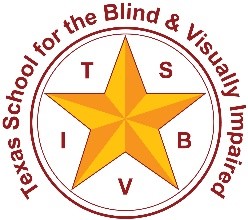Cultural Language of Congenitally Deafblind
Question: How can we teach a language that does not yet exist?
All formal language is based on vision or hearing
From before birth we are all exposed – maybe bombarded is a better word – with auditory and visual information that we call “language”. It’s natural for us as adults to interact with and communicate with our children from the very first moments of life. Adults are often the primary carriers of this information and are the teachers of what we know as “language”. Each generation passes it along to the next.
In our culture, we tend to think of the developmental journey of learning language and communication in the context of “speaking and writing English” (or another language spoken in the home) or, if the person is deaf, we might consider American Sign Language (ASL). Language is passed down from one person to the next. Throughout the world, with all of our different cultures and languages, the process repeats itself. We learn language from people who are already fluent in that language. We are influenced by the culture that surrounds us. What happens though, if the person cannot perceive or access the language or cultural identifiers around them?
For the person who is deafblind, who has only ever accessed information tactually and perceives the world tactually, access to language that is meaningful is going to be very difficult. How can they learn tactile communication if there aren’t people around them who are already fluent in tactile communication? Does a formal tactile language truly exist? One that is not derived from concepts based on vision or hearing?
Deafblind Interaction Menu
Cultural Language of Congenitally Deafblind
If you approach life from a non-seeing and non-hearing perspective, your experience of the world will be tactually oriented. Obviously, we seeing-hearing people, as well as blind or deaf individuals, are going to need to adjust our language – and perspective – to one that’s more attuned to children who are deafblind. Even someone born deaf or blind does not have the same experience with language and tactile perception as a child who is born deafblind. The child who is deafblind becomes as much the teachers as we are. This is where our job as observers comes in. It’s where our approach of following the deafblind person’s lead comes in, becoming the “learner” rather than the “teacher”.
Seeing and hearing are distance senses, which allow typical children to observe the world and to start to build internal concepts about how things work. Children who are deafblind don’t have that kind of access to the world. Everyone needs an interaction partner in order for communication and language to develop.

A man named Martin Prechtel once said this: “The highest form of praise we can give is to acknowledge a person’s interest and to explore the world together.” For a communication partner and a person who is deafblind, this means engaging in deep and respectful exploration of the tactile world.
Landscape of Touch

